Summoning a witness to testify in court is a crucial aspect of legal proceedings. However, this method carries various drawbacks. Not only is it costly and time-intensive, but in situations involving human rights infringements where witnesses often embody the victims, testifying can induce additional trauma. A sworn statement provides a viable alternative, alleviating the need for witnesses to re-live painful or traumatic experiences.
Table of Contents
Sworn Statement Templates
Sworn statement templates are valuable tools used in various legal, administrative, and investigative settings to document and record statements made under oath. These templates serve as standardized formats that ensure consistency, accuracy, and reliability in capturing essential information while adhering to legal requirements.
A sworn statement, also known as an affidavit, is a written declaration made voluntarily by an individual, known as the affiant, who confirms the truthfulness and accuracy of the statements contained within the document. The purpose of a sworn statement is to provide a legally binding and admissible record of facts, events, or circumstances related to a particular case, investigation, or legal proceeding.
What Is a Sworn Statement?
![Free Printable Sworn Statement Templates [Word, PDF] for Construction 1 Sworn Statement](https://www.typecalendar.com/wp-content/uploads/2023/06/Sworn-Statement-1024x576.jpg 1024w, https://www.typecalendar.com/wp-content/uploads/2023/06/Sworn-Statement-300x169.jpg 300w, https://www.typecalendar.com/wp-content/uploads/2023/06/Sworn-Statement-768x432.jpg 768w, https://www.typecalendar.com/wp-content/uploads/2023/06/Sworn-Statement-1536x864.jpg 1536w, https://www.typecalendar.com/wp-content/uploads/2023/06/Sworn-Statement-1200x675.jpg 1200w, https://www.typecalendar.com/wp-content/uploads/2023/06/Sworn-Statement.jpg 1920w)
A sworn statement, also known as an affidavit, is a written document in which the author, or affiant, states facts and swears that the information is true and correct to the best of their knowledge. It is usually signed in the presence of a notary public, or a person authorized to administer oaths, to ensure its validity.
This document is used in legal proceedings as a means of presenting information without requiring the individual to appear in court. Sworn statements can be used in a variety of circumstances, such as in court cases, during police investigations, or in administrative processes. They are particularly useful when the information is sensitive or potentially traumatic, as it reduces the need for a witness to give a testimony in court, which can be a distressing experience.
What is Sworn Statement include ?
A sworn statement, also known as an affidavit, generally includes the following elements:
Title or Caption: This identifies the legal action for which the sworn statement is being used and often includes the jurisdiction (e.g., the specific court) where the case is being heard.
The Affiant’s Information: This usually includes the name, age, occupation, and address of the person making the statement. This is to show that the person making the sworn statement is competent and capable of understanding the circumstances.
The Statement of Truth: This is the main body of the sworn statement and contains all the facts that the affiant is attesting to. It should be clear, concise, and factual, avoiding opinions or hearsay. Each point is usually numbered for clarity and ease of reference.
Oath or Affirmation: This is a statement where the affiant affirms that the information given is true to the best of their knowledge. The language can vary but is often something along the lines of “I swear that the above statement is true and correct to the best of my knowledge.”
The Jurat: This is the portion of the document where a notary public or a similar authorized official verifies that the affiant has sworn to the truth of the statement. The date and location of the signing will be included, and the notary will sign and stamp the document.
Signatures: The affiant must sign the sworn statement, and this is typically done in the presence of the notary or the authorized official.
Difference between Sworn Statements and Affidavits
The terms “sworn statement” and “affidavit” are often used interchangeably, as they both refer to a document in which an individual swears under oath that the information they are providing is true. However, in some jurisdictions and contexts, they may have slightly different connotations or applications.
Here’s a comprehensive guide to help differentiate between the two:
Sworn Statements
Informality: Sworn statements are generally less formal than affidavits. They can be written in a more conversational style and are sometimes used in more informal contexts.
Usage: They are often used in preliminary investigations or during the early stages of a legal process when a notary may not be available to officially notarize the document.
Witness Presence: While a sworn statement is signed under oath, it may not always require a notary or authorized official to witness the signing.
Affidavits
Formality: Affidavits are typically more formal and structured. They follow a specific format and legal language.
Usage: They are often used in court proceedings, and for more significant legal transactions or processes. This could include real estate transactions, divorce proceedings, or other formal legal matters.
Witness Presence: Affidavits are usually signed in the presence of a notary public or an officer who has the authority to administer oaths. The official not only verifies the identity of the affiant but also confirms that the affiant has willingly sworn to the truth of the statement.
Jurisdiction: The requirements for an affidavit may vary from jurisdiction to jurisdiction. Some jurisdictions require the affiant to sign the document in the presence of a notary public, while others may accept a statement sworn before another authorized officer.
It’s important to note that while these differences exist, both sworn statements and affidavits serve a similar purpose – they are meant to provide a truthful account of events or facts under penalty of perjury. The choice between a sworn statement and an affidavit often depends on the requirements of the legal procedure or the jurisdiction in which the document is being submitted.
Lastly, because laws and legal terminology can vary widely by location and context, it’s always recommended to consult with a legal professional to ensure you’re using the correct document for your specific needs.
What Other Purposes Are Sworn Statements Used For?
Sworn statements, often known as affidavits, can serve multiple purposes across various scenarios beyond traditional legal proceedings. Here are some instances where sworn statements might be used:
Real Estate Transactions
Sworn statements can be used to attest to facts or events related to property ownership, such as a person’s rights to a certain property, claims of liens, or status of the property’s title.
Estate Settlement
In probate proceedings, sworn statements may be utilized to affirm the validity of a will, the value of the deceased’s assets, or the identities of heirs or beneficiaries.
Immigration Proceedings
Sworn statements can be utilized to support immigration applications, such as confirming the validity of a marriage in a spousal visa application or verifying a refugee’s claim of persecution.
Insurance Claims
When filing insurance claims, a sworn statement might be required to confirm details about the claim, such as the circumstances of an accident or the value of a damaged item.
Debt Settlement
Sworn statements might be used to attest to the amount and nature of debts owed or the financial situation of the debtor.
Identity Verification
Sworn statements can be used to confirm a person’s identity in cases where typical identification documents are lost or unavailable.
Personal Injury Cases
In personal injury cases, sworn statements might be used to detail the events leading to the injury, medical treatment received, and impact of the injury on daily life.
Family Law
In family law cases, sworn statements can be utilized to provide information about a person’s financial situation for spousal support or child support purposes, or to detail events or behaviors relevant to child custody or visitation rights.
Employment Verification
In some cases, sworn statements might be used to verify employment, job responsibilities, salary, and other job-related details.
In each of these cases, the sworn statement provides a legally-binding assurance of the truthfulness of the information it contains. However, it’s crucial to consult with a legal professional when drafting or submitting a sworn statement to ensure it meets all necessary legal requirements and accurately represents the facts.
How to Write a Sworn Statement
Writing a sworn statement is a significant responsibility as it involves providing legally binding information under oath. The exact format and requirements can vary based on jurisdiction and the purpose of the statement, but the following guide outlines general steps to consider when crafting a sworn statement:
Step 1: Understand the Purpose
Understand why you need to write a sworn statement. It could be for a legal case, a visa application, or an insurance claim. The purpose will dictate what kind of information you need to include.
Step 2: Gather Necessary Information
Collect all the relevant facts and information that need to be included in the sworn statement. The information should be accurate, comprehensive, and strictly factual.
Step 3: Begin with Your Personal Information
Start by identifying yourself. This typically includes your full name, age, occupation, and address. You might also include your relationship to the parties involved or the case at hand.
Step 4: Write the Statement of Truth
This is the main body of your sworn statement. Here, you will detail the facts you are attesting to. Remember to:
- Write in the first person, since the sworn statement is your account of events or facts.
- Keep the language clear, concise, and to the point.
- Avoid opinions or hearsay – stick to the facts as you know them.
- Keep the information organized and, if possible, in chronological order. Numbering each point can be helpful.
- Be as specific as possible with dates, times, locations, and other details.
Step 5: Conclude with an Oath
Write an oath stating that the information in the document is true. An example could be, “I, [Your Name], swear under penalty of perjury that the foregoing is true and correct to the best of my knowledge.”
Step 6: Review and Sign the Document
Review the entire document to ensure there are no mistakes and that everything is correctly represented. Sign the document, but remember this should generally be done in the presence of a notary or another official who can administer oaths.
Step 7: Notarize the Document
Find a notary public or another official authorized to administer oaths in your jurisdiction. They will verify your identity, witness your signature, and then sign and stamp the document themselves, making it a notarized sworn statement.
It’s important to consult with a legal professional when creating a sworn statement to ensure it’s correctly done and fulfills the necessary legal requirements. Making a false statement under oath can have serious legal consequences, including charges of perjury.
FAQs
Is a sworn statement legally binding?
Yes, a sworn statement is legally binding. By signing it, the person is attesting to the truthfulness of the information under the penalty of perjury.
How is a sworn statement different from an affidavit?
The terms are often used interchangeably, but depending on the jurisdiction, a sworn statement can sometimes be less formal than an affidavit. Affidavits are typically used in court proceedings and are always notarized, while sworn statements may not always require notarization.
Can a sworn statement be used in court?
Yes, sworn statements can be used in court as a means of presenting evidence or facts, especially when it’s inconvenient or impossible for the person to be physically present.
Who can notarize a sworn statement?
A sworn statement can be notarized by a notary public or an official who has the authority to administer oaths, such as a county clerk or a commissioner of oaths, depending on the jurisdiction.
What happens if you lie on a sworn statement?
Lying on a sworn statement is considered perjury, which is a serious crime. The consequences vary by jurisdiction but may include fines, imprisonment, and being charged with a felony.
Do I need a lawyer to write a sworn statement?
While it’s not necessary to have a lawyer write a sworn statement, it can be beneficial to consult with one. This is especially true if the sworn statement is for a legal proceeding to ensure that it’s correctly structured and contains all relevant information.
Can a sworn statement be changed?
Once a sworn statement has been signed and notarized, it generally cannot be changed. If you need to amend the information, you’ll usually need to create a new sworn statement, acknowledging and explaining the changes.
Is a sworn statement the same as a deposition?
No, a sworn statement and a deposition are not the same. A deposition is oral testimony given under oath, often during a pretrial phase, and is transcribed for later use in court. A sworn statement, on the other hand, is written and signed under oath.
Can a sworn statement be used in place of live testimony?
In some cases, yes. A sworn statement can sometimes be used as an alternative to live testimony, especially in situations where it would be difficult for a person to appear in court. However, the decision is often up to the discretion of the court.


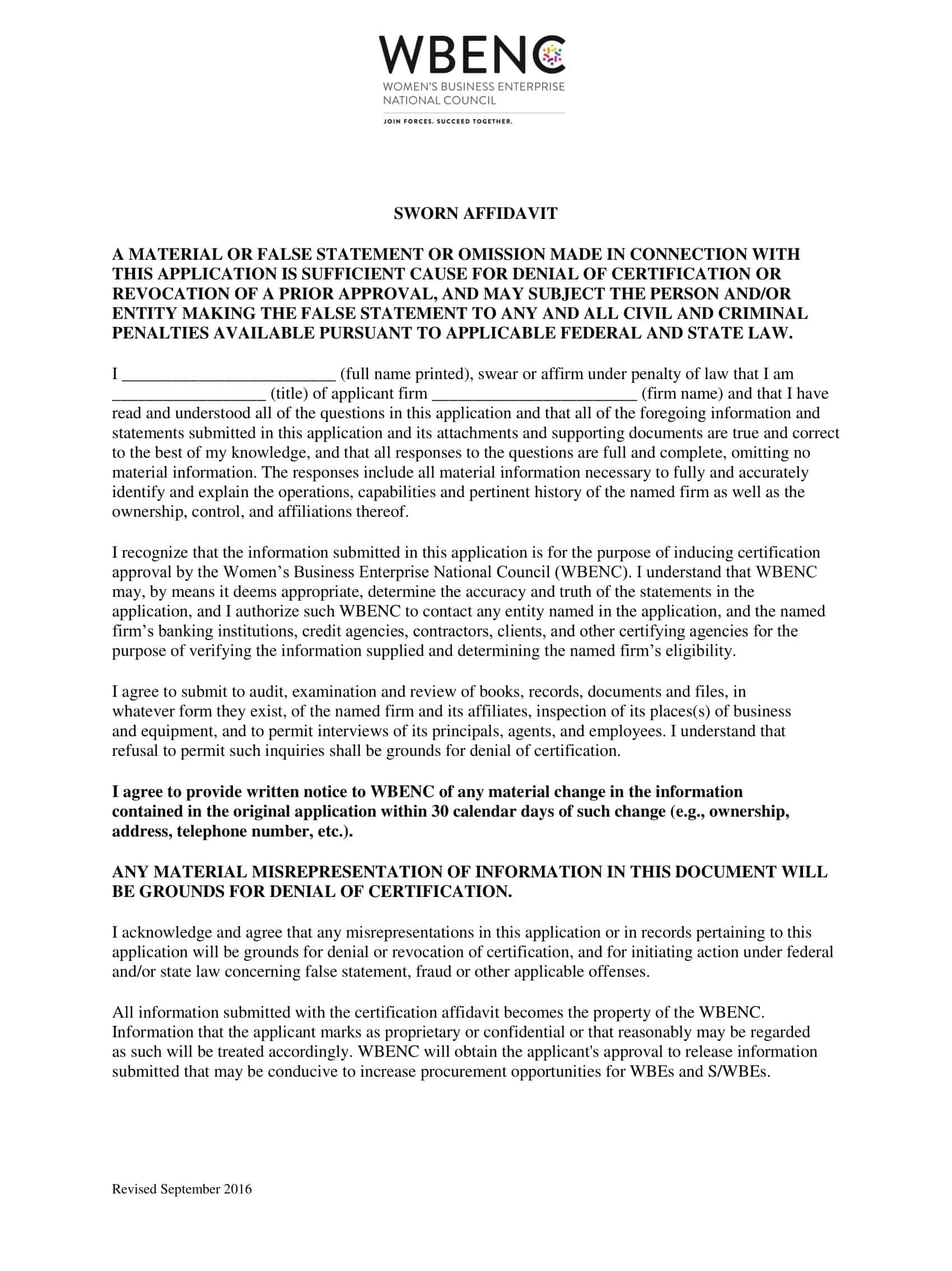


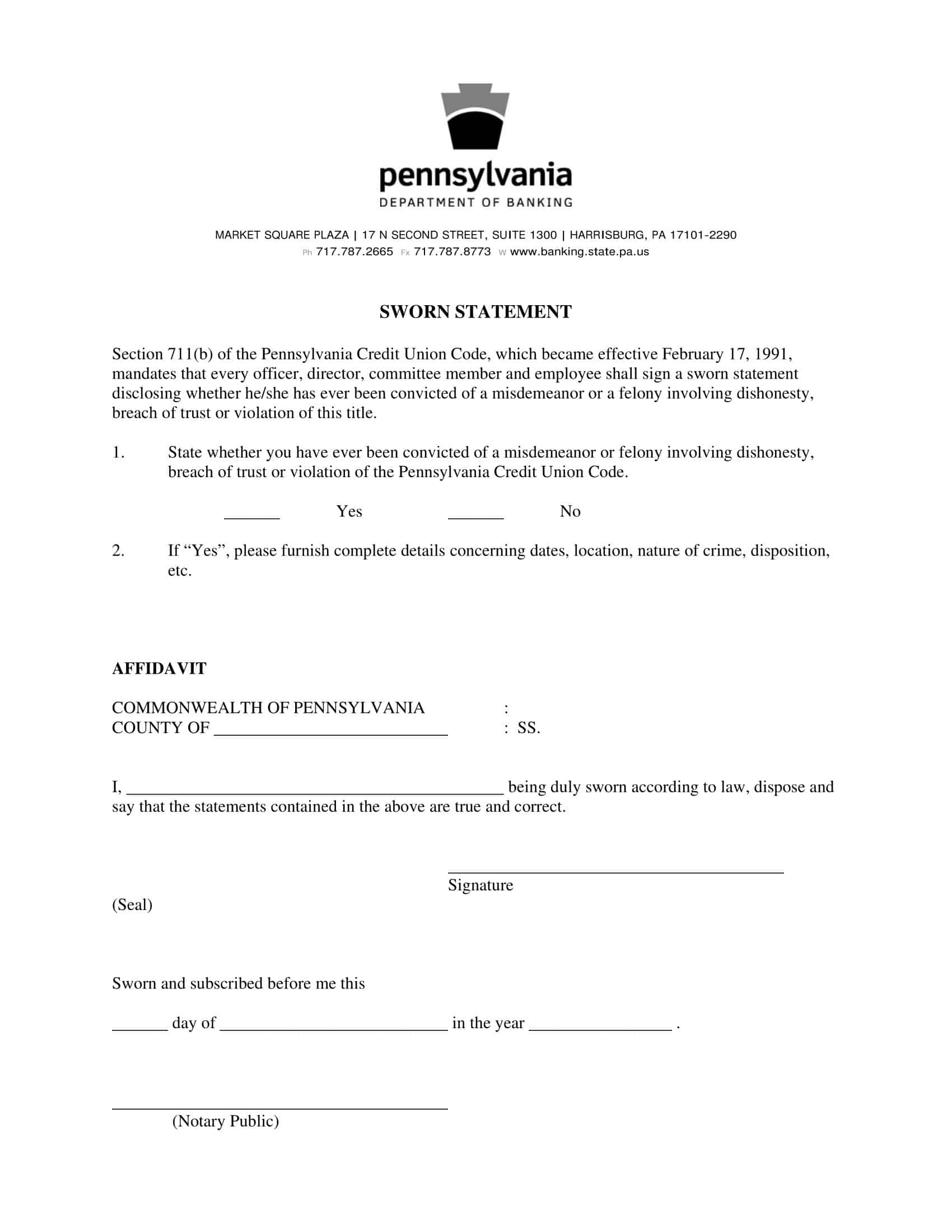


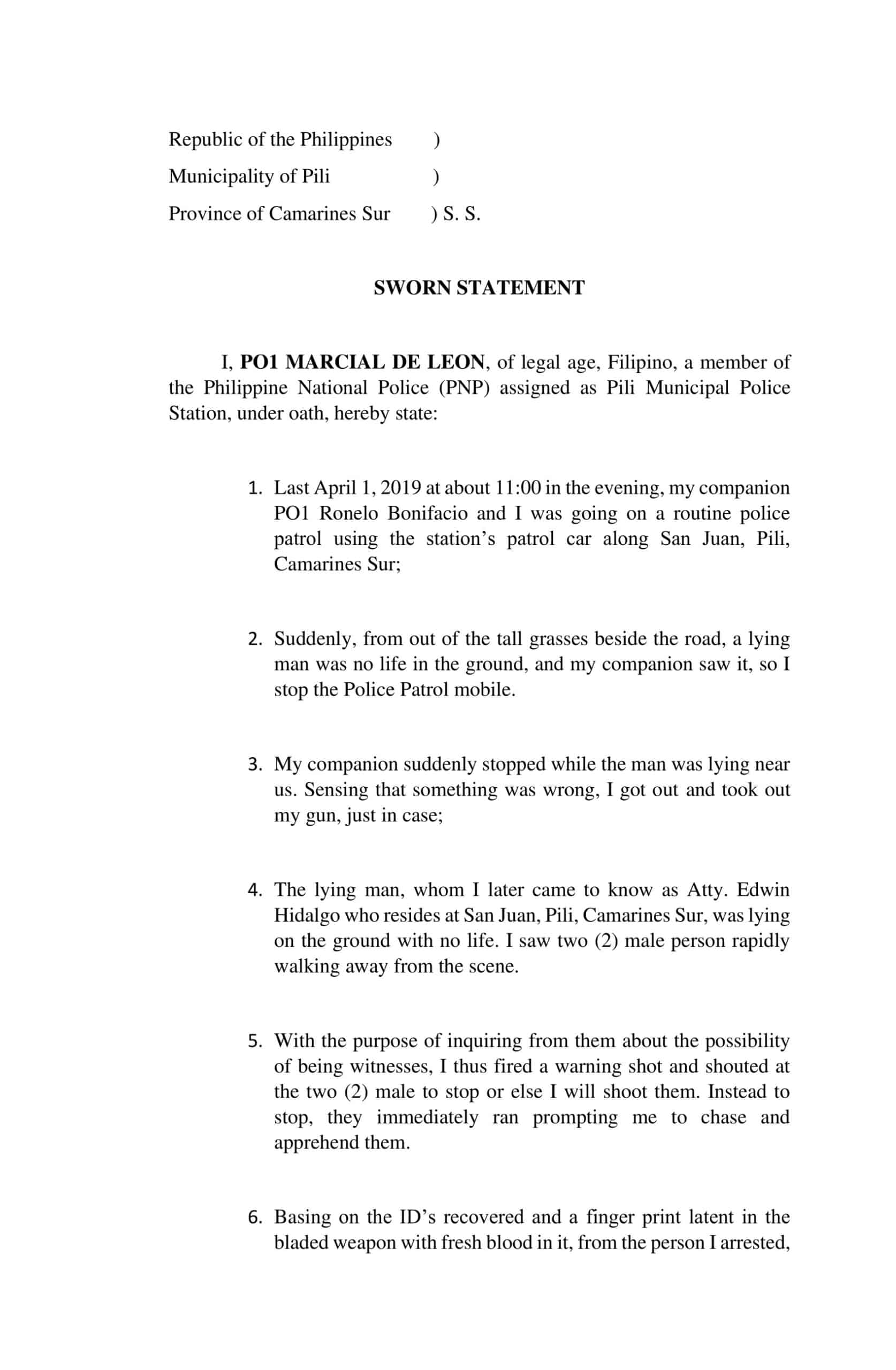










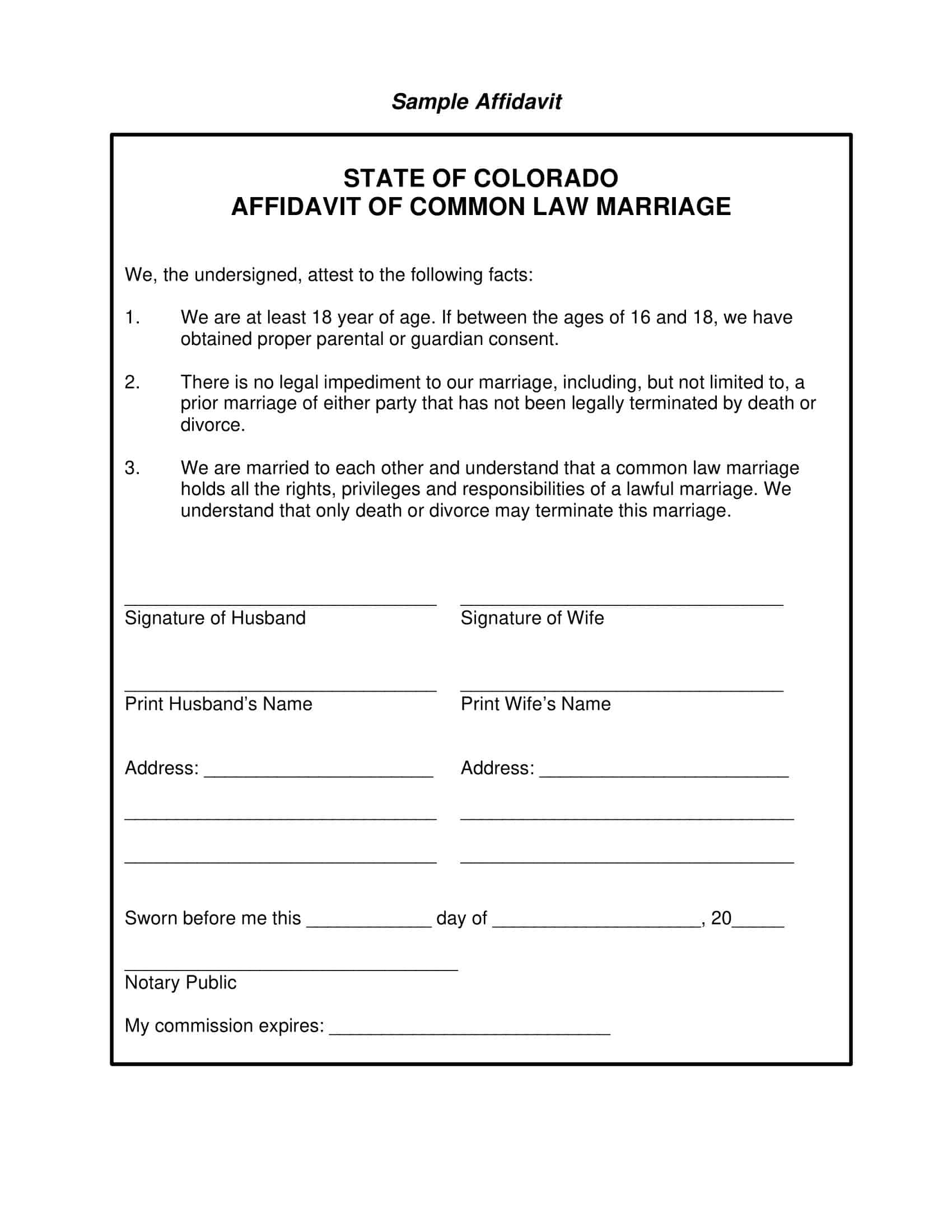






















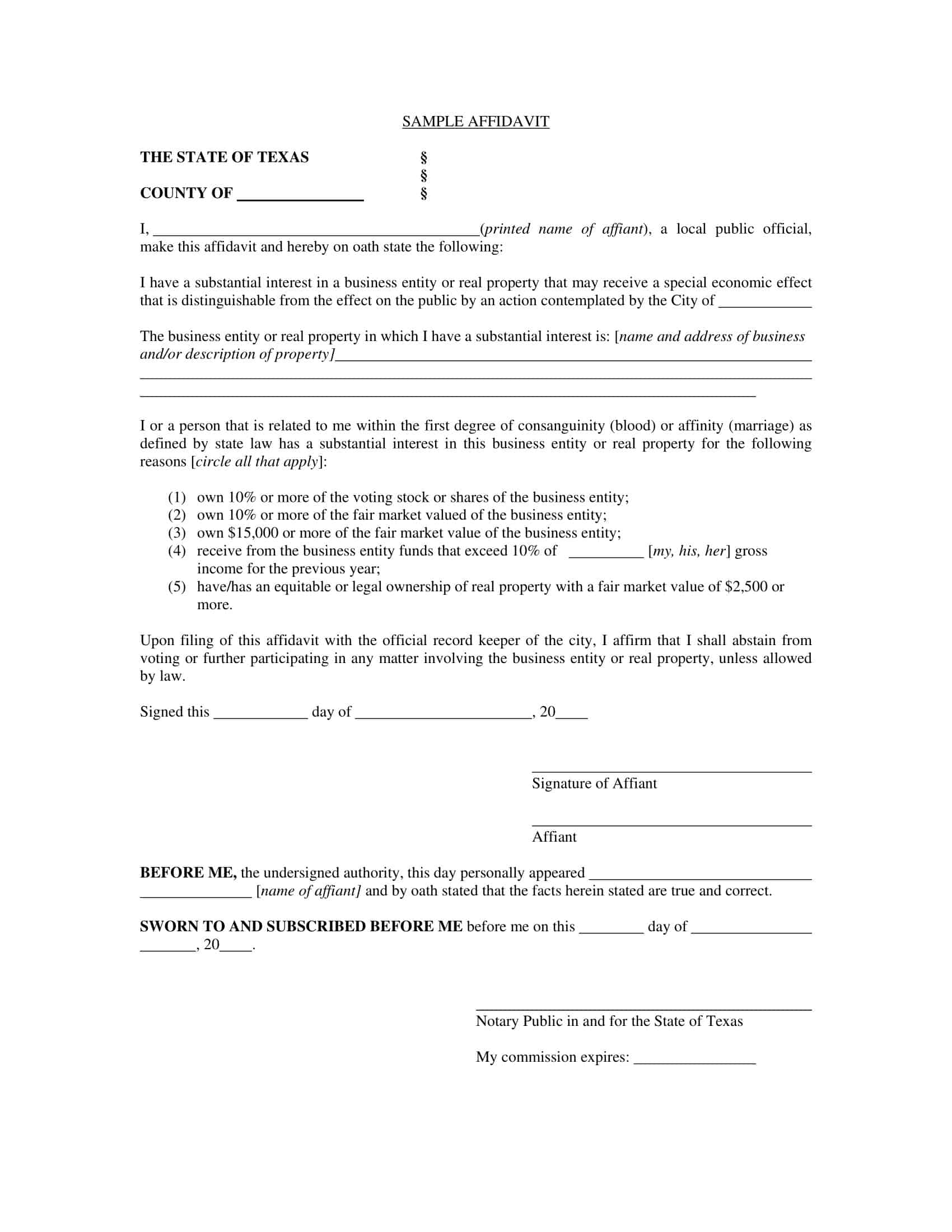






![Free Printable Roommate Agreement Templates [Word, PDF] 2 Roommate Agreement](https://www.typecalendar.com/wp-content/uploads/2023/06/Roommate-Agreement-150x150.jpg)
![Free Printable Landlord Statement Templates [Word, PDF, Excel] Example 3 Landlord Statement](https://www.typecalendar.com/wp-content/uploads/2023/05/Landlord-Statement-150x150.jpg)
![Free Printable Credit Card Authorization Form Templates [PDF, Word, Excel] 4 Credit Card Authorization Form](https://www.typecalendar.com/wp-content/uploads/2023/06/Credit-Card-Authorization-Form-150x150.jpg)
